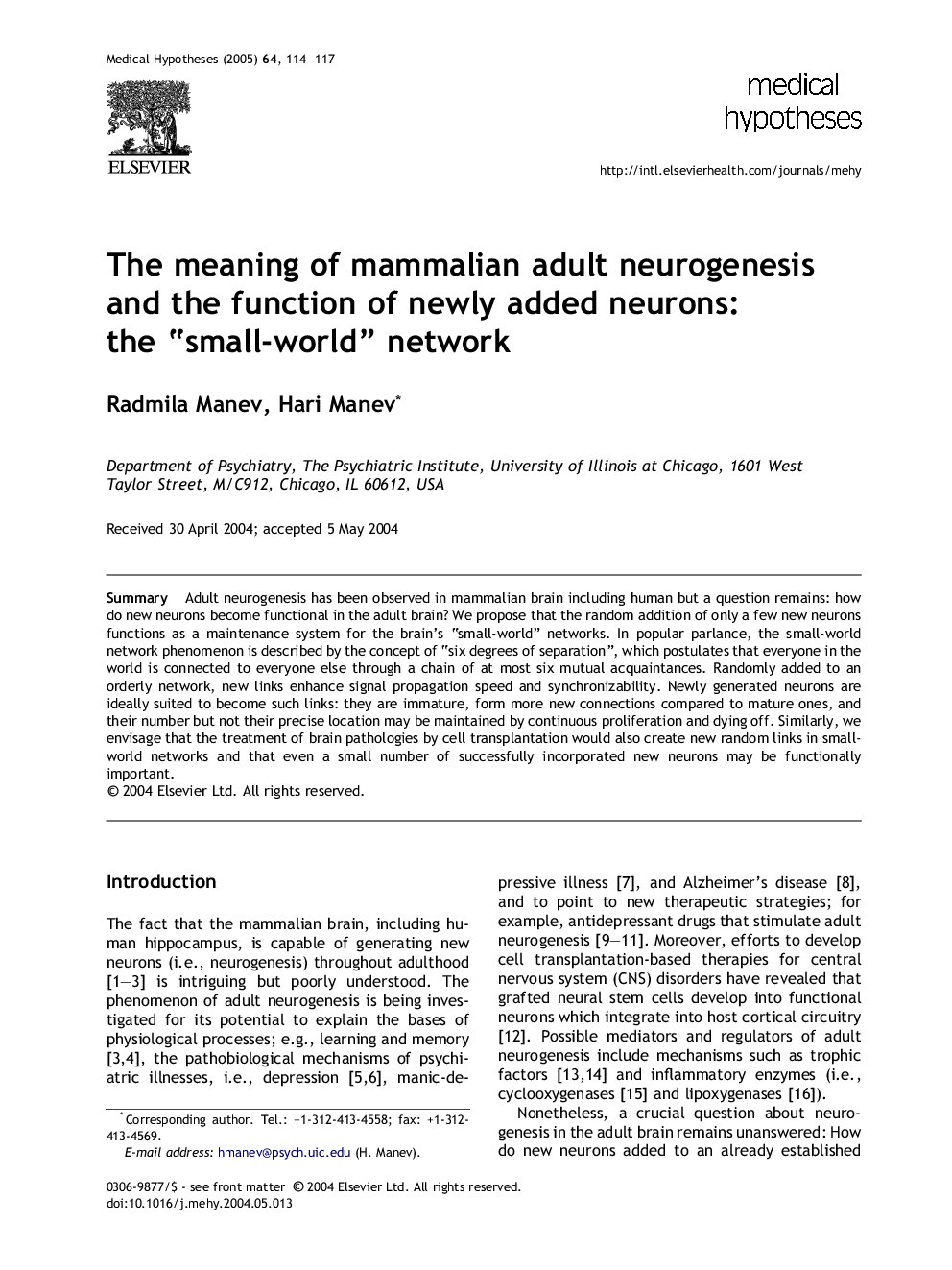| Article ID | Journal | Published Year | Pages | File Type |
|---|---|---|---|---|
| 8996904 | Medical Hypotheses | 2005 | 4 Pages |
Abstract
Adult neurogenesis has been observed in mammalian brain including human but a question remains: how do new neurons become functional in the adult brain? We propose that the random addition of only a few new neurons functions as a maintenance system for the brain's “small-world” networks. In popular parlance, the small-world network phenomenon is described by the concept of “six degrees of separation”, which postulates that everyone in the world is connected to everyone else through a chain of at most six mutual acquaintances. Randomly added to an orderly network, new links enhance signal propagation speed and synchronizability. Newly generated neurons are ideally suited to become such links: they are immature, form more new connections compared to mature ones, and their number but not their precise location may be maintained by continuous proliferation and dying off. Similarly, we envisage that the treatment of brain pathologies by cell transplantation would also create new random links in small-world networks and that even a small number of successfully incorporated new neurons may be functionally important.
Related Topics
Life Sciences
Biochemistry, Genetics and Molecular Biology
Developmental Biology
Authors
Radmila Manev, Hari Manev,
